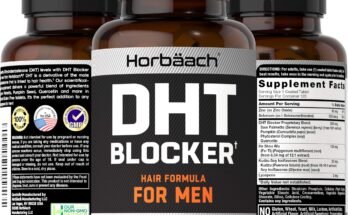Hair porosity is the hair’s ability to absorb moisture and, at one and the same time, keep it moisturized through the scrutinization of the hairs’ individual protection involving cuticle. Once the cuticle is closely packed, absorbing moisture proves highly challenging; yet, as it becomes increasingly open, moisture seeps in more readily. A porosity test helps understand how porous one’s hair is, and with an understanding of the porosity, one can choose the right hair care products and treatments to keep their hair healthy and strong.
Types of Hair Porosity
Hair porosity is basically divided into three types:
1. Low porosity
- The cuticle layer is tightly packed and moisture cannot easily get in.
- Water usually beads up on the surface of the hair rather than absorbing.
- Hair stays wet quite a while after washing.
- Products tend to sit on the hair rather than absorbing into it, resulting in product buildup.
2. Medium (normal) porosity
- The cuticle layer is open enough to balance the absorption of conductive products and moisture retention.
- Hair takes in moisture easily and is able to hold it for a reasonable amount of time.
- It is normally easy to manage and responds well to a variety of products and styling methods.
3. High porosity
- The cuticle layer is very widely open or damaged, leading to fast penetration of the moisture yet easy escape.
- Hair dries very quickly after washing.
- May have frizz, tangles, and breakage as some of the issues.
- This is often due to heat styling, chemical treatments, or environmental degradation.
Choose your hair porosity test
You can use any of these quick tests to test for hair porosity at home:
1. The Water Float Test
- Standard hair is clear-tied and product-free for the test technique.
- Drop it in a glass of water. Watch and wait for some time:
- If it floats on top, you have low porosity.
- If it floats halfway in the glass, you have medium porosity.
- If it sinks and is always at the bottom, you have high porosity.
2. The Slip and Slide Test
- Run your finger from the tip to the root of a hair strand.
- Smooth means low porosity.
- Bumps along the way means medium porosity.
- Lots of bumps or rough patches mean high porosity.
3. The Spray Test
- Spray a section of hair with water; importantly, the hair needs to be dry.
- If it sits on top and isn’t absorbed, what do you have? Low porosity.
- If it absorbs moderately and retains some moisture, you have medium porosity.
- If it totally soaks in, but dries out quickly, you have high porosity.
How Hair Porosity Can Lead to Hair Loss
Porosity remains crucial for overall hair health, yet it affects hair loss in multiple ways:
- Low porosity hair: Because moisture has a tough time penetrating, hair breaks and thins, often becoming brittle with time.
- High porosity hair: The cuticle is too open, allowing nutrients to escape along with moisture, resulting in thin and easily lost hair.
- Improper hair care routine: Using the wrong product depending on porosity issues leads to bald patches as a result of product buildup along with irritating the scalp.
For Low Porosity:
A. Heat Up to Open the Cuticle: Apply deep conditioning treatments using heat (like a warm towel or a hair steamer) to help moisture penetrate.
B. Choose Lightweight Products: Use water-based or lightweight leave-in conditioners to avoid buildup.
C. Clarify Regularly: Use a clarifying shampoo once a month to remove product buildup that could prevent moisture from entering.
D. Use Humectants: Products containing honey, glycerin, or aloe vera help attract and retain moisture.
For Medium Porosity Hair:
A. Maintain a Balance: Rotate your protein treatments with deep conditioning to maintain strong and hydrated hair.
B. Moderate Use of Heat Styling: Limit the use of heat styling tools; always use heat protectant.
C. Protect Hair at Night: Use silk or satin for pillowcases, and cover your hair with a silk scarf to hold moisture in.
For High Porosity:
A. Use Protein Treatments: Balancing protein products will help reinforce the hair cuticle and reclaim excessive moisture loss.
B. Layer Products to Retain Moisture: Apply leave-in conditioner with sealing oil (like coconut or argan oil), finishing with butter-based cream on top.
C. Avoid Strong Chemicals and Heat: Reducing exposure to hair dyes, relaxers, and heat styling will help slow down cuticle damage.
D. Cold Water Rinse: After washing, rinsing with cold water will help seal the cuticle and hold on to moisture.
Conclusion
Knowing the porosity of your hair helps you maintain hair that is healthy, strong, and moisturized. By knowing your hair’s porosity type and using a new hair care routine, you can avoid hair injuries, reduce hair loss, and allow healthy hair growth. Whether your hair is low, medium, or high porosity, thus good products and correct techniques for moisture retention should be used, as well as for overall hair strength.
Q&A on Porosity of Hair
1. What is porosity of hair?
Hair porosity is simply one’s ability to absorb and retain moisture. It will be determined by the condition of your cuticle layer.
2. How do I test my hair’s porosity at home?
For a home test for porosity, try the water float test or the slip-and-slide test.
3. What does low porosity hair mean?
Low porosity hair has tightly packed cuticle layers, which makes it very difficult for moisture to penetrate, thus resulting in buildup.
4. How do you care for low-porosity hair?
Lightweight, water-soluble products should be applied. Use heat in deep conditioning; regularly clarify to remove buildup from the hair.
5. What is medium-poi hair?
Hair that has evenly spaced, balanced cuticles enabling it to absorb and retain moisture with ease of controllability.
6. How do I care for medium porosity hair?
Alternate protein and moisture treatments, limit heat-styling, and protect hair at night.
7. What does high porosity hair mean?
Cuticle in high porosity hair is quite open; moisture absorbs quickly but gets lost just as fast.
8. How do I revive high porosity hair?
Use protein treatments, layer the moisture-sealing products over each other, rinse with cold water, and also avoid aggressive chemicals/heat styling.
9. Does hair porosity contribute to hair loss?
Indeed, this imbalance is known to weaken strands of hair to the extent that it may cause loss of hair through breakage and shedding with time.
10. Is it true that hair porosity does change over time?
Yes, factors like aging, chemical treatments, heat damage, or improved hair care practices may be responsible for porosity changes.




